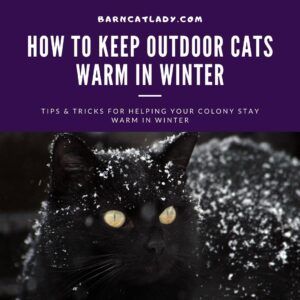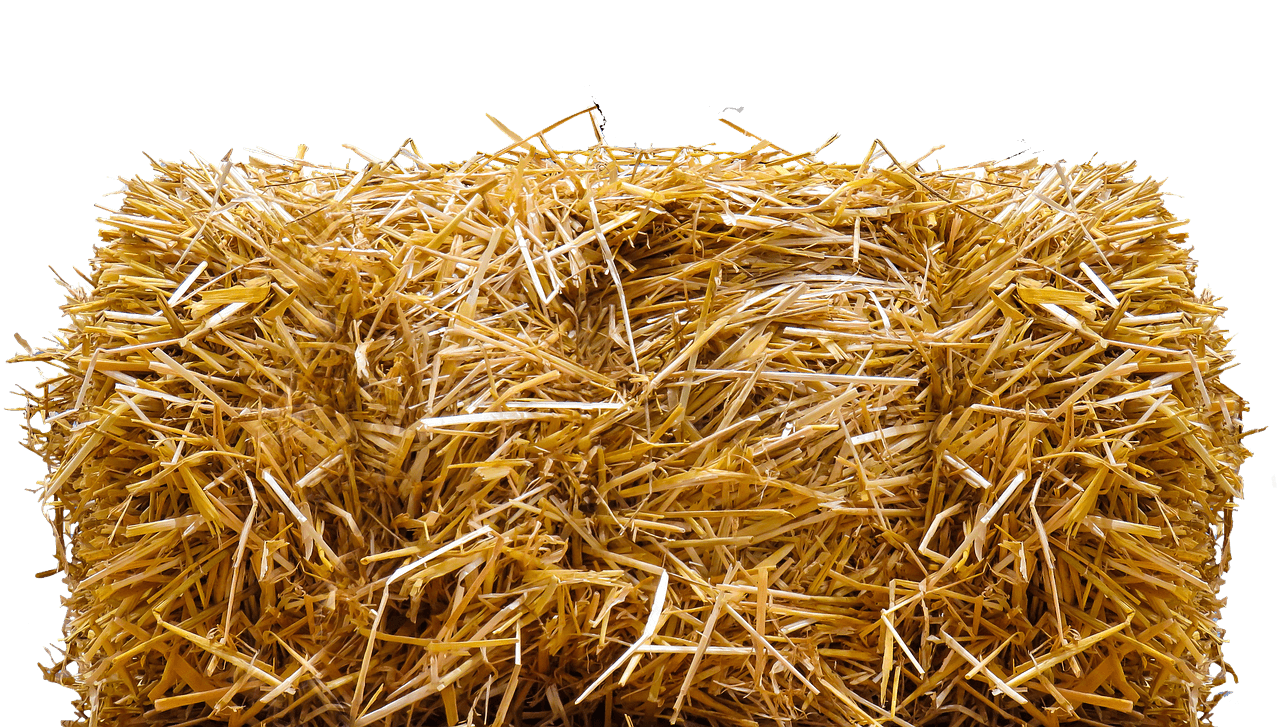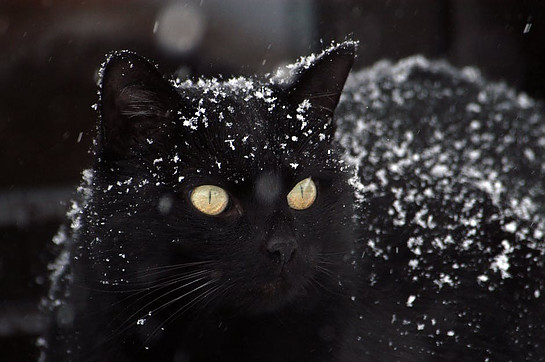
The heat of summer is almost over and it’s starting to cool down now. It’s time to start thinking about how to keep outdoor cats warm in winter. Whether it’s barn cats, a feral cat colony, neighborhood community cats, or the stray cat you’ve found, you may want to consider helping our outdoor felines stay warm in winter.
Depending upon where you live, you may need to only provide a small shelter from the coldest days. If you live in areas that stay frozen the entire winter and into spring, you might have to get much more creative.
The ideas on how to keep outdoor cats warm in winter come from resources experience, fellow cat caretakers, and feral cat organizations. If you want to share your ideas on keeping cats warm whenever you are located, comment below! I’m always open to learning new ways of helping feral cats and their caretakers.
Disclaimer: This post contains affiliate links. I may earn a small commission from qualifying purchases, at no cost to you. Read the Affiliate Disclosure for full details.
Cats Need Shelter!
Perhaps the most important way to help outdoor cats stay warm in winter is to ensure that they have a shelter of some kind. If they have access to your shed, that’s a form of shelter. If they are working cats in a barn, then they have shelter. If they’re living under your mobile home, they’ll have shelter.
If they refuse your shed, are driving the neighbors up the wall climbing into their insulations from the basement, or they are located in an area without decent shelter, then you will want to build or buy the cats shelters.
This can be done as cheaply as needed or as pretty as you like, depending upon the what you want and what the cats need.
The DIY Option
You can build cat shelters out of anything!
DIY Shelter Ideas:
- Plastic storage containers
- Old refrigerators
- Dog houses
- Coolers
- Plywood
- Large faux rocks
- Camper toppers
- Sheds
- Beneath your porch
- Donated lumber scraps
- Cardboard boxes
The possibilities are endless!
You can line these makeshift shelters with things like Reflectix or foam sheets from a home improvement store or layer a container within a container and fill the ‘walls’ with straw or foam insulation sheets. You might want to consider caulking any cracks and crevices cold air can get into the shelter as well or even wrap the whole thing in plastic bags, except for the entrance.
You can then fill the container with straw so that the cat has a nice cozy and water-resistant bed to curl up in.
You can find instructions online from Alley Cat Allies or Alley Cat Advocates or even on Pinterest!
Here’s a video of one of the easiest DIY cat shelters you can build.
Buy Option
What if you want a pretty shelter for your yard or barn? What if you just don’t want or can’t build one on your own? What if money isn’t a problem? Then you can buy an outdoor cat shelter like the Kitty Tube. Or whatever aesthetically pleasing cat house you want.
There are many options to choose from and what you should purchase will depend upon where you live, what you like, where you want to put the cat shelter, and the cats themselves.
If you want a heated shelter for inside the barn? If you want a heavy-duty one for super cold weather that will last a while? What about pretty houses for your yard? The choices are endless.
You can find my favorite designs at my article about the 9 Best Outdoor Cat Shelters for Winter.
Give Them Access to Buildings
You can also add cat doors to your garage, basement windows, sheds, or tack rooms to give the cats access to buildings. These cat doors can range from a simple cat flap to a microchip-activated cat door if you microchip your colony or working cats. Just don’t forget a litter box!
Heck, you can build them their own small shed if you want to house multiple cats in an enclosure and build your own little feral cat sanctuary.
Shelter Placement is Important Too!
Where you put your cat shelters is just as important in how cozy it is.
- Make sure the shelter is in an out-of-the-way place and not near busy roads or placed in areas with lots of foot traffic.
- Try to get the floor of the shelter off the ground. This can be accomplished by putting it on something like a pallet, cinderblocks, bricks, or even layering shelters by putting a smaller one inside a bigger one, or you can purchase some that are elevated.
- Keep the shelter protected from wind and snow as much as possible, either by placing under trees, against the house, under your porch, etc.
Should You Use Door Flaps?
Door flaps are useful to help keep heat from escaping a shelter and discouraging wildlife, but it also sometimes discourages the cats themselves.
You can try to use door flaps on DIY cat shelters by building one into it or you can buy a shelter with the flap, but I would recommend removing it if it seems your cats don’t use it.
Don’t Forget the Insulation and Bedding
Wherever your barn cats or feral cat colony takes shelter, don’t forget to make sure it stays warms enough in that shelter. Don’t use space heaters (which are dangerous unattended) but you should make sure the shelter will actually be warm enough for them.
Whether you made your own shelter or bought one, you will want to add foam insulation sheets, Reflectix, or even straw and newspaper to insulate the shelter if possible. This is why they suggest putting one plastic storage tote inside a larger container. You can fill the space between the containers with an insulating material, like straw.
If your cat shelter is purchased and doesn’t have space you can fill with insulation, you can line the inside of the cat shelter with cardboard and foam insulation sheets or whatever insulation medium you can afford. Just be sure it’s safe for cats!
Lastly, you want the cats to have a comfortable and warm place to sleep inside that shelter, not a cold wooden floor.

If the cat shelter is outside, add straw. NOT hay. Straw. Hay absorbs moisture, gets soggy, and is prone to mold. Straw is much easier to keep dry. Don’t add newspaper, blankets, towels, cat beds, or really, anything else. You want straw. Moisture from the cat will drip to the bottom of the shelter and not be soaked into the bedding if you use straw.
Wet bedding doesn’t help cats stay warm. Wet bedding will also freeze, which is definitely NOT warm. Wet bedding will also turn moldy. Straw bedding will keep a cat much warmer.
If you can afford it, Mylar blankets cut to size and taped to the inside of the shelter are also an excellent way to help cats stay warm in their shelters and can be used instead of straw for insulation. I don’t believe they’ll make great bedding though, so you could line the shelter with mylar blankets and put straw on top of it.
For working cats with access to buildings and ferals with access to your porch or garage, I highly suggest investing in heated cat houses and self-warming cat beds. They’ll LOVE it and it’ll keep them much warmer. I wouldn’t recommend this for a feral cat colony living in the woods, but for working cats it’s perfect! Or even regular cat beds with barn heat lamps.
If they stay in the warehouse or barn most of the time, you can put what you want in the little houses or boxes they prefer sleeping in. Just be sure to check the bedding regularly to see if it is getting wet. If it is, change to straw.
Related Post: How to Care for a Barn Cat

Feed the Cats More and Feed Them Better

In winter, cats use up a lot more calories staying warm than they do during the summer. It’s not just ensuring they have fat layers to help keep themselves warm, although that definitely helps. It straight-up just takes more energy for cats to stay warm when it’s cold.
You can do this by simply feeding the cats more food, or more often, or better quality cat food in the winter. You can also add a lot of things in addition to their regular meals.
Ideas to ensure the cats get more calories in their diets (in ADDITION to their regular food), can include:
- Wet food in addition or instead of the dry food as wet food has more nutrients and is easier to digest. Just be sure it doesn’t freeze!
- Mix the regular dry food with kitten food (wet or dry)
- Cooked meat such as shredded chicken
- Bacon and hamburger grease or fat to their food.
- High-calorie supplements such as Nutrical or if a cat is really in trouble, Purina Pro Plan’s Veterinary Diets Critical Nutrition (will require approval from your vet).
- Beef or chicken liver or other high nutrient organs to their diets.
- Feed them more often than normal.
- Purchase better quality food for winter months that contain high percentages of protein and fat.
What you can do for your feral cats will depend upon your finances and how many you are caring for, of course.
Related Post: What is the Best Food for Outdoor Cats?
Heat Up Wet Food
By heating up wet food or using heated bowls, it’ll help a cold cat warm up pretty quickly. It’s like a human drinking hot tea, coffee or cocoa during winter months after coming inside from the cold. It feels just as good for cats to eat something warm and it takes less energy to digest than frozen wet food or dry food.
However, hot food will freeze faster than cold food, so don’t leave it out!
Access to Fresh Water
In winter, water bowls freeze easily. It’s really, really important that you figure out a way that the cats can have access to drinking water and not a block of ice in an aluminum bowl.
There are a number of ways to do this:
- Refresh the water multiple times a day.
- Water fountain (not recommended for extremely cold climates!)
- Black livestock feed bins or other dark-colored bowls and keep them in an area with direct sunlight. Dark colors absorb heat best.
- Deep bowls will not freeze as fast as wide bowls.
- Heated bowls.
- Silicone camping bowls can easily pop out the frozen water so that it can be replaced with fresh water.
- Plastic bowls instead of metal as metal bowls will freeze faster.
- Put a microwavable heating source under the bowls, such as a sock filled with rice or a Snuggle Safe to keep the water from freezing so fast.
- Spray the underside of plastic bowls with spray insulation will help it take longer to freeze. (Not IN the bowl, on the outside)
- If you use a spigot or faucet as a water source, keep the water running slightly into the bowl. Running water doesn’t freeze as fast as still water.
Don’t put hot or warm water outside for the cats. Hot water freezes faster than cold water does. (Yes, the old myth is TRUE, folks.) Heated water bowls are perfect as it provides a constant source of heat, but hot water alone will freeze faster.
Use a Cat Feeding Station
The purpose of building or buying a cat feeding station is to protect the cats and their food from the rain, snow, and other weather. There are many feeding stations you can build using a simple plastic storage container or if you’re good with woodworking, you can build a sturdy and pretty-looking feeding station. Check out Alley Cat Allies for instructions on how to build your own cat feeding station.
Or you can simply purchase one!
Related Post: Outside Cat Feeding Station Ideas
Trap-Neuter-Return, Y’all!
There are a ton of benefits to spaying and neutering feral cats and only one of them is because it helps control the population.
Cats who are fixed are healthier overall. This may be because they’re no longer roaming miles looking for mates and fighting, they’re not in contact with multiple sick cats all of the time, spreading upper respiratory infections and worse. Fixed cats eat better and put on healthy weight.
Another big reason to TNR your colony is kittens are the most vulnerable of felines. If any of the colony is going to freeze to death, it’s going to be the kittens. Don’t let those tiny little babies die. Fix your colony.
Related Post: Does TNR Work?

How to Keep Outdoor Cats Warm in Winter: Extra Safety Tips!
There are a few other important ways to keep your cat colony safe during the winter and not just by ensuring they are warm.
Stick to a Feeding Schedule
There are multiple reasons why you may wish to stick to a feeding schedule, but one of the most important applies to helping cats in winter. Cats can tell when it’s feeding time. They will show up on time to get their nummies. This is very useful if you want to feed wet food (warmed up or not) so it isn’t left out to freeze.
Another reason for feeding schedules that is useful in winter is that because the cats will come to eat on a schedule. You can do a headcount to make sure no one is missing, see if any new cats show up, or if anyone in your colony isn’t doing well.
Even if you’re feeding 3 times a day instead of 2 like normal, do it at the same time each day. Unless you have a protected area like a garage or barn, I wouldn’t leave dry food out all day. It will attract raccoons, opossums, foxes, rats and mice, coyotes and maybe hungry bears in winter.
If you really want to give the cats access to dry food all day, microchip feeders or automatic feeders might be a solution.
Don’t Put Food Near the Cat Shelters
You do not want to put the cat food in or near the cat shelters. Cat food will attract wildlife like raccoons and cats will rarely sleep near where they eat, especially if there is leftover food to attract critters. Feed away from the shelters.
Check Your Shelters Regularly!
This is especially important if you live in an area that gets snow. Cat shelters can snow-in cats where they may get seriously dehydrated and hungry, and possibly die in there.
Another reason to check your shelters is to be sure an injured or sick cat isn’t hiding in them, as well as to check for wildlife. You don’t want to be housing a family of raccoons while your cats are cold!

Check Your Car Engines!
Cats, especially mama cats with their kittens, will gravitate towards warm spaces. This WILL include car engines, wheel wells, and even under your car. Pop your hood before starting your car and check your engine and other hiding spots. Lay on the horn a few times as well, just to be sure.
Don’t use Chemical Deicers on Sidewalks or Driveways
Don’t use chemical deicers or rock salt to melt ice as both can cause harm to your cat’s paws (and worse if they lick it off their feet). There are pet-friendly alternatives available.
Watch That Antifreeze
You want to be sure your car isn’t leaking antifreeze nor do you want to fill your car with antifreeze in an area that cats have access to, such as the garage or driveway. If it does spill, clean it up. Antifreeze is deadly to cats and dogs. Consider switching to an antifreeze with propylene glycol as it is less toxic, but it is STILL dangerous.
If You TNR in Winter, Watch Those Traps
A good rule of thumb when caring for animals is that if it is too cold for you, it is too cold for them. A fur coat helps, but not if they’re stuck in a trap in the wind and rain for four hours and gets hypothermic. Cat fur is not made to get wet. It makes cats cold very easily. They can and do die of hypothermia, just like humans do.
Keep Your Pet Cats Inside
Pet cats should be indoors, not wandering the streets like strays and ferals. But if you adopted an indoor-outdoor cat or adopted a feral that refuses to stay indoors all the time, then please bring them inside. Especially during the night when temperatures drop the most.
What Are Your Tricks to Keeping Your Ferals Warm?
Remember that if you find it too cold outside, so do the cats. If you’ve got a colony of ferals, adopted barn cats, or a single stray, a little bit of effort goes a long way in keeping them alive this winter. So follow some or all of
How do you keep your colony warm during winter where you live? Let me know in the comments below!
Lovies!

Is fine straw or coarse straw warmer for an outdoor cat shelter?
Straw is a byproduct of other crops, mainly the cereal plants, such as oats, barely, rye, wheat, rice, and there is even corn straw (apparently). It is the dried stalks of these plants. The straw itself isn’t fine or course, but you can choose which type of straw to use, such as wheat straw or corn straw, which may be bigger or smaller depending upon which type of straw it is. Though most of the time, it’s just labeled as straw.
It’s not going to matter which type of straw is used. Straw, being a dried stalk, doesn’t soak up moisture, so it drips down to the bottom of the feral cat bedding. That’s why it’s the most recommended product in feral cat houses (unless you can maintain a heated house, of course). Unlike hay and blankets, which soaks it up, which can then freeze in winter.
I do not think they have straw super fine, which might end up being more like hay than straw, and thus a bad idea. And you don’t want mulched straw, that will hold onto moisture. They sell oat straw on Amazon, specifically for feral cat bedding, so maybe start there?
I have a stray cat coming in garage and made him a shelter out of cardboard and stray in it. I left the garage door open at bottom by only 7 inch with a plank at bottom of garage to stop cold air from coming into garage. heated water bowl, and lots of dry Purina one cat food. I have as well a radiant oil heater at 600 watts for the cat that I leave on all the time to try and make sure he is warm in there. I all so leave a small peach of straw as you go into shelter in that way I can tell if he go into it or not but he use it. He is small cat, and seems friendly but scared like I can see he would be, and I am not pushing it with him, and just going to let him come to me as he is ready. After winter will get him fixed. Its work but dont mind it, and because have 4 rescue cat as well that I keep in the houses all the time. Your site is very good, and the info is as well, and thank you for that. I know this site will help a lot of people understand cats better and how to take care of them.
Hi, Jean!
Thanks for caring for the stray cat! 🙂 And helping the poor guy stay warm this winter.
Thanks so much for the compliment! I hope it helped you and anyone else with unowned cat issues. I’m very thankful for people like you who are caring for those poor cats who just need food and warmth.
I can not seem to find an outdoor pressure sensitive heating pad (one that turns on with the weight of the cat and turns off when the cat leaves). I live in Pennsylvania. Can you recommend such a product?
Hi, Mark,
The only one I can find is by K&H, which specializes in heated cat houses and other outdoor cat and dog stuff. It is supposed to warm up only when in use by the dog/cat. You can find it on Amazon here: https://amzn.to/3rAa72J. You can also try those cat pads that are ‘self-heating’ which means it warms up as a direct result of your pet’s body heat.
Hope that helps!
Thank you for this site! So much good information!
This spring, we found a momma with three kittens in our unused barn loft in northern Ohio. Had all neutered and vaccinated, gave them flea treatment, then returned them to the barn. Found a home for one, so we have three barn cats now. I’d love to allow them to move into the coop in the lower part of the barn with the warm chickens and the heated water dish, but I’m afraid that if the cats have access, so will mink, and raccoons. I would LOVE suggestions on how to successfully provide access to the coop that doesn’t put the hens at risk. Until then, they stay in the loft. We stuffed a box into a cubbie in the center of the hay loft and filled all spaces with straw and a blanket. Now I know to remove the blanket and move the food out as well. And we’ll look for ways to reduce the opening, which is large right now – maybe by replacing the box with a plastic tube with a cut-out. Thank you, again, for providing this helpful information.
Hi, Cathy!
Thanks so much for your kind words!
Without knowing exactly what the setup is, I can only give general suggestions on trying to keep wildlife out at the same time as allowing cats to come and go. One option is to use cat flaps (particularly cat doors that require microchips to use, if the cats are chipped), but sometimes wildlife CAN figure out regular cat doors, unfortunately. That said, it does discourage a lot of wildlife, especially if you keep the opening small. You could also install a locking cat door flap as well and just lock it up when the cats are settled in for the night, too, but this requires you to actually lock it up.
But yes, absolutely make the door small. That is the best defense for wildlife that may harm the hens. That said, I’d see about cat doors and maybe a trail camera to ensure that no other wildlife (like freaking raccoons) figure out the door. Raccoons can fit through dog doors and often do, but if it’s cat-sized, it should discourage an adult raccoon. But if one of your cats is HUGE, then that may be an issue. I’m not very familiar with minks, so I don’t know how often minks navigate cat flaps, though. Foxes I know can be a concern for chickens too, but if the doors are small enough that should prevent foxes.
As for the current setup, keep the food separate from wherever he likes to sleep, definitely. Blankets are only a real concern in outdoor cat houses if the cat gets wet with snow and then goes into the house, causing the blanket to soak up moisture. If your cats don’t get wet because they’re in the barn whenever it’s snowing or you all don’t get snow, then blankets are fine, as long as they’re switched out regularly.
Hope that helps!
For everyone’s consideration..
– If you use a container with a small entry the cat may be warmer but also becomes more vulnerable. Any animal, including dogs, foxes, raccoons, other cats and more, finding a trapped cat may lead to the cat getting injured. Keeping the container close to the house, and perhaps in sight of a home security camera, can help.
– Some sort of bedding is needed to prevent heat from being leeched from the cat but if you use hay or other natural bedding you should change it periodically as it can be home to many types of pests and parasites too.
– Keep things dry and block the wind, of course, but consider the direction the morning sun shines and make sure it reaches the container, preferably the opening. A god sunbeam is the cat’s meow.
– One shelter is usually not going to work with multiple outdoor or semi-feral cats because they are territorial when not closely related. If you see multiple cats but provide one shelter you are providing the dominant cat some warmth, not the likely most needy cat. Keep them seperated, they’ll find them.
– If you feed them keep the same schedule every day. In winter a feral cat will leave it’s shelter when it thinks it’s time for you to provide food. By feeding at the same time they can better anticipate and stay sheltered the rest of the time. Help cats not spend hours waiting for food by staying regular.
If they look healthy and aren’t harming anything there’s no need to call a shelter where they may be deemed non-adoptable and put down.
Hi, Mr. Purr,
So actually, regarding a small entry. A small entry is actually SAFER than larger entrances, or multiple entrances. A ‘trapped’ cat is a vicious cat and no one can get it, not a raccoon while the cat is hissing and spitting and definitely not the pack of coyotes trying to coax the cat out of the shelter, where it will promptly be chased and caught. Just as long as the cat can squeeze in, it’s not just warmer, it’s safer!
Second, NEVER EVER EVER use hay in outdoor cat shelters. STRAW ONLY. Straw repels moisture and it drips to the bottom of the shelter, hay ABSORBS moisture and gets soggy and then frozen. Blankets or other types of bedding aren’t a great idea either unless we’re talking about when you can change them out daily.
But the rest of the advice is very good. Thanks!